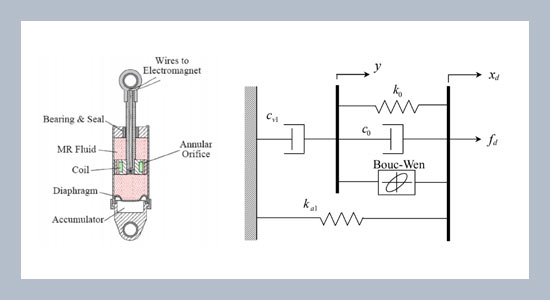Praveen Kumar*a,b, R.S. Jangida, and G.R. Reddyb a Department of Civil Engineering, Indian Institute of Technology Bombay, Powai, Mumbai, India
b Bhabha Atomic Research Center, Trombay, Mumbai-400 085, India
Download Citation:
|
Download PDF
Seismic loads on piping system due to earthquakes can cause excessive vibrations, which can lead to serious instability resulting in damage or complete failure of piping system. Vibrations in the piping system can be reduced using passive control, active control, semiactive control and hybrid control. In this paper, semi-active magnetorheological (MR) dampers have been studied to mitigate seismic response and vibration control in piping system used in the process industries, fossil and fissile fuel power plant. The performance of MR dampers using various control algorithms is explored. A study is also conducted on the performance of control due to variation in the command voltage of MR dampers. The effectiveness of the MR dampers in terms of the reduction in responses, namely, displacements, accelerations and base shear of the piping system are compared with uncontrolled and passive controlled responses. This study is carried out under four artificial earthquake motions with increasing amplitudes in all the three directions of motion. The analytical results demonstrate that the MR dampers under particular optimum parameters are very effective and practically implementable for the seismic response mitigation, vibration control and seismic requalification of piping system.ABSTRACT
Keywords:
Seismic; earthquakes; passive control; active control; semi-active control; control algorithms; MR dampers.
Share this article with your colleagues
REFERENCES
ARTICLE INFORMATION
Received:
2011-08-30
Revised:
2011-10-28
Accepted:
2012-01-09
Available Online:
2012-06-01
Kumar, P., Jangid, R.S., Reddy, G.R. 2012. Response of piping system with semi-active magnetorheological damper under tri-directional seismic excitation. International Journal of Applied Science and Engineering, 10, 99–111. https://doi.org/10.6703/IJASE.2012.10(2).99
Cite this article:






